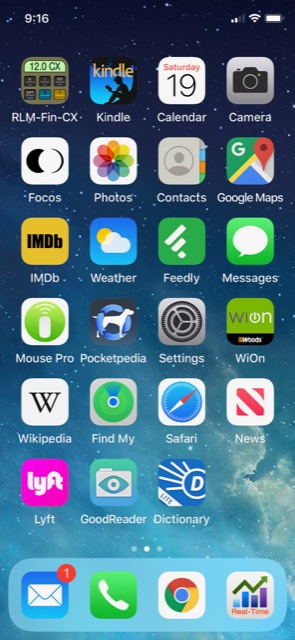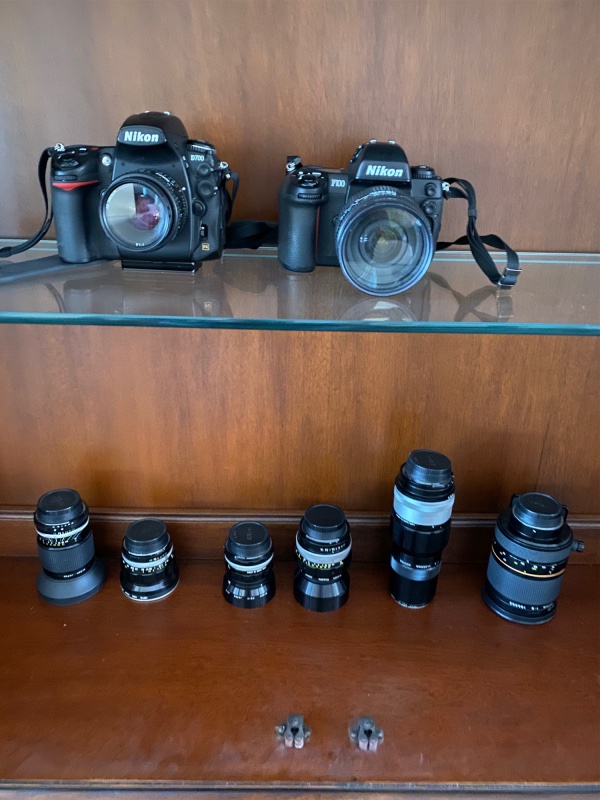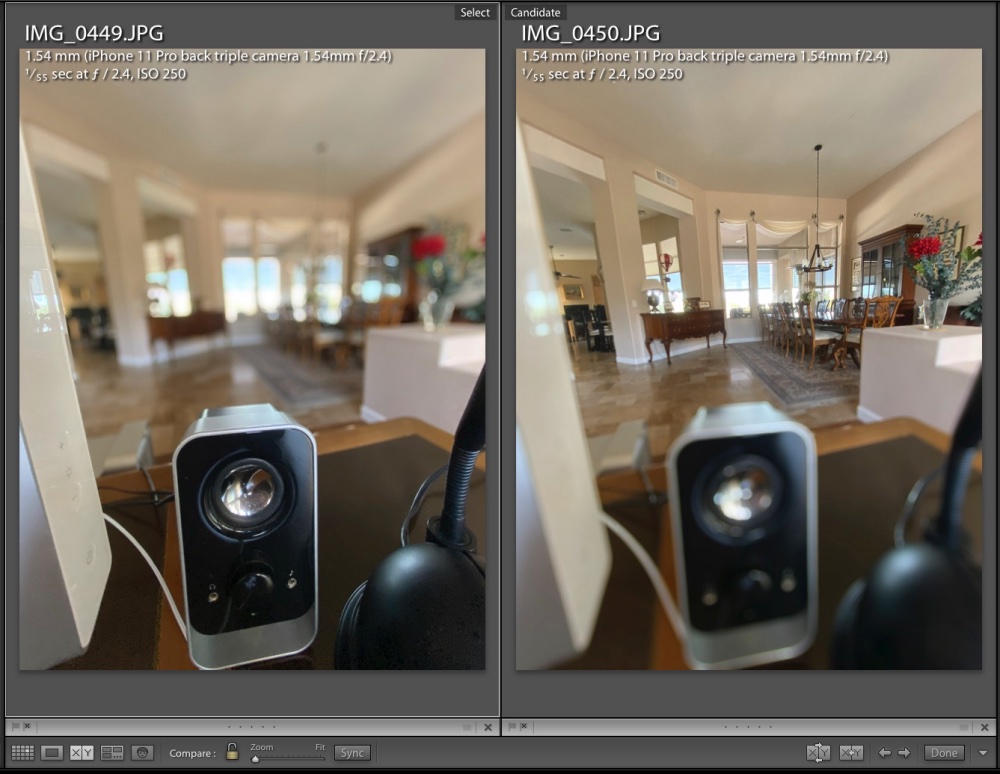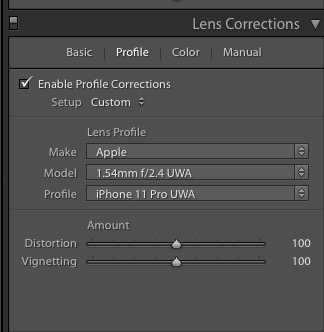Quirks and anomalies.
Click here for an index of all iPhone articles.
Here’s an index of the iPhone 11 Pro pieces:
Part I – The revolution realized
Part II – Upgrading
Part III – The ultrawide lens
Part IV – The Normal lens
Part V – The Telephoto lens
Part VI – The Focos app
Part VII – Quirks and anomalies
Part VIII – HDR and the Night Mode
Part IX – The digital zoom function
Part X – A lens correction profile for the ultrawide optic
This article mostly examines some of the non-camera issues of the iPhone 11 Pro. Previous pieces have focused largely on the iPhone’s use as a still camera. The iPhone 11 is not all sweetness and light and in some instances the maker has regressed. I address these areas below.
Without a proper case the iPhone 11 is an accident waiting to happen. It’s slippery as an eel, will not sustain a drop on concrete – forget the Apple videos, it’s glass front and back, for heaven’s sake – and has thin, rounded sides which invite dropping. Get a protective case, and I don’t mean one of those poncy silicone designer things. Good stout leather is called for, affording a proper grip.
Face ID only works in vertical orientation with the screen notch pointing up. Other orientations do not work as, presumably, it only knows your facial contours one way up. Not a big deal but as I pre-visualize images before raising the camera, I learned that raising the iPhone 11 Pro in landscape mode expecting Face ID to do its thing is a non-starter.
Face ID seems especially sensitive if you switch between glasses/no glasses. I had originally programmed it wearing eyeglasses and noticed it would hesitate for several seconds on occasion if my glasses were removed. It must be especially sensitive to the detail in the eyes, I would guess. No matter. I programmed an additional ‘face’ without glasses and all is again well, and super fast. I still have difficulty believing just how fast it is and how it works even with relatively acute face-to-display angles. This is a magnificent implementation of a technology no one asked for.
FaceID is currently limited to two ‘faces’. More would be nice to allow use by friends and relatives.
I do find the notch at the top of the screen – where the Face ID sensors and selfie camera reside – much more of an irritant than I expected. Just something to get used to, I suppose.
You cannot get the battery percentage to show on the home screen. The notch at the top for all the Face ID and selfie tech leaves too little space. The quickest way is to swipe diagonally down from the top right and the percentage will be disclosed. Not that big a deal as the battery life is extraordinary. Despite several days of hard use I could not get it to fall below 65% at the end of the day.

Getting the battery percentage to show.
The option to show large app icons has gone. There’s a clunky workaround using zooming, but it’s sub-optimal. Like the inappropriate manner of its hipster Apple Store clerks, Apple has forgotten that the core of its affluent base is older people – with older eyes. They like hipsters as much as they do small icons.

Small icons only – a shame.
Taking screenshots is far trickier than of old. You have to press the ‘volume up’ button on the left briefly while holding down the power button on the right. Try that one handed.
Some genius at Apple has decided to remove the Loupe feature which made editing such a pleasure on the small screen; the replacement – a vertical cursor – is awful and makes editing far harder. Go figure. Change for change’s sake.
Apple makes its usual claims about enhanced thumbprint resistance, stating that new coatings help. The display still merrily gathers fingerprints, but I have to say it’s better than before.
Everything you have read about the extraordinary battery life of the latest iPhones is true. Even after a hard day’s use I find mine is still at 50% whereas with iPhone 7 it would be below 20%. As my third Kindle has now failed I will use the iPhone for reading on cross country flights. Despite Amazon’s dishonest claims (the real details are in the fine print), using decent brightness it is impossible to have your Kindle survive such a flight. None of my last five did. None. And as my third one has now failed – a crazed display this time – I am through with the gadget. So that’s $200 saved right there.
Apple states that the brightest display on any of its iPhones is the OLED one in the iPhone 11 Pro and Pro Max. It’s certainly the best I have yet used in bright sun, and that includes all I have tried on digital cameras, but it could still be brighter for really bright light. But one gets by. For what it’s worth the OLED display delivers true blacks, but OLED screens are far better used in big TVs, in my opinion, than in small hand held devices.
And processing images from the camera on that small display is not easy. Outlining small areas is very difficult and, frankly, the display is really too small to be of much use for photo editing. I export to an iPad when touch screen editing is called for, then on to LR on the desktop.
As for water resistance, I am not about to test this but such is the liability exposure for lying that I am inclined to believe Apple.

I can assure you your high priced DSLR cannot survive this.
Apple claims: “iPhone 11 is water resistant up to 2 meters for up to 30 minutes”. Having once fallen in the pool with my iPhone 6 attached by belt holster – it immediately died – that’s nice to know. I was drilling a hole for a thermometer lanyard, and the laws of physics disagreed with me.
Finally, the tricky subject of settings. The number of variables which can be set in the Settings app is now overwhelming. Given the modern fad for refusing to publish a proper instruction book, I am gradually working my way through these to see if there’s something which will make life simpler of which I am ignorant. Surely, Apple can do a better job of this?
My commitment to the iPhone 11 Pro can be gauged from the contents of my gear cabinet. All the MFT hardware has been sold, leaving film and digital FF Nikon bodies and some old lenses, mostly MF. Of these only the 50/2 Nikkor MF compares for resolution to the lenses in the iPhone. All the others are worse or far worse and neither body has a hope when it comes to proper control of dynamic range in the recorded image. The iPhone is simply in a different class in that regard.

Gear cabinet denuded.
All gear dies and why anyone would collect useless, depreciating, lumps of metal and plastic which will cease functioning in the near term, mystifies me. This is, let’s face it, obsolete, crappy old gear devoid of art or artifice, not an appreciating Ferrari collectible artwork clothed by a master like Pininfarina or Scaglietti.
Disclosure: I have no relationship with the Apple Corporation, I own no stock or derivatives in Apple, and I am in no way remunerated by them. I do think the iPhone 11 Pro is a groundbreaking device of unique value added to photographers. Finally, I would rather have a root canal then have to visit an Apple store.













